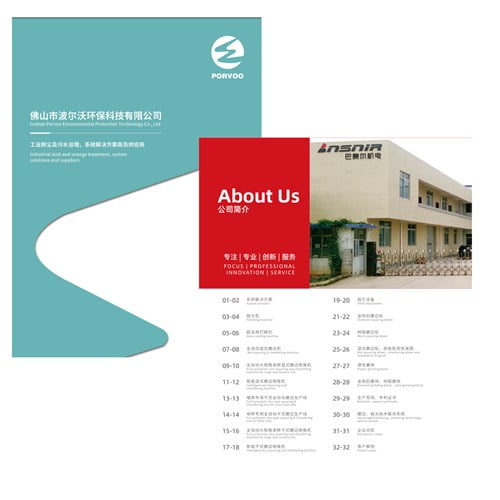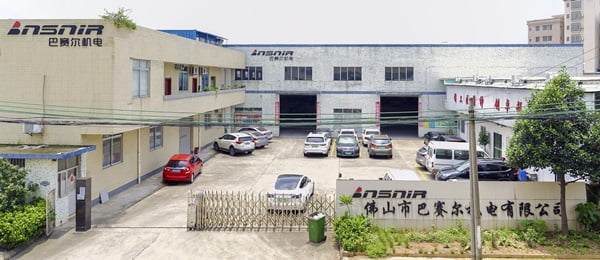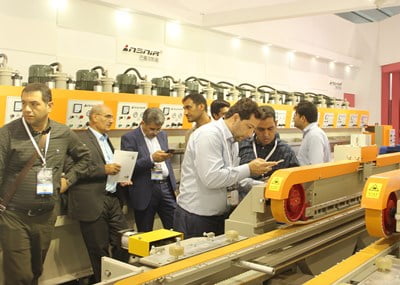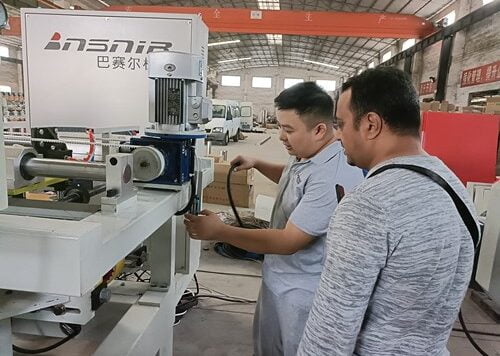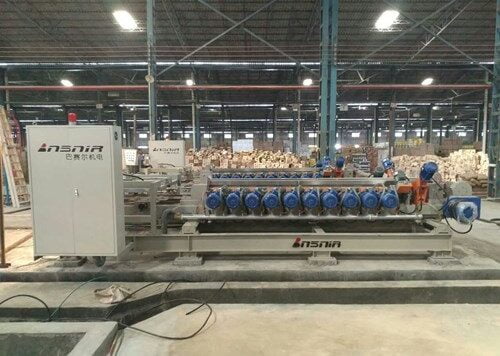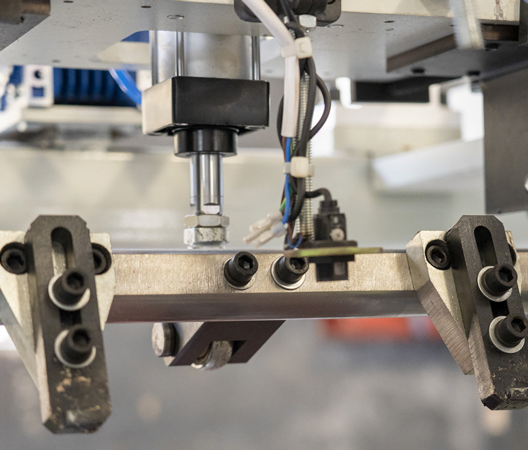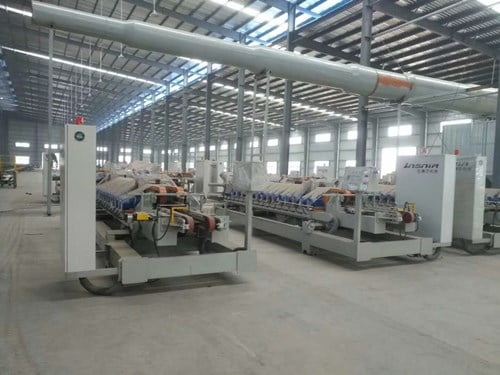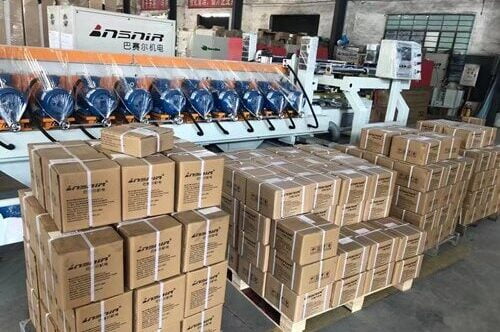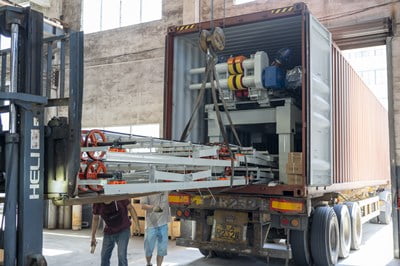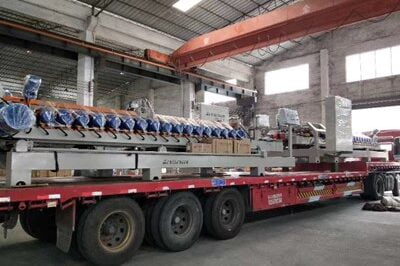The Evolution of Ceramic Surface Finishing Technology
The journey of ceramic surface finishing has undergone remarkable transformation over the decades. Back in the 1980s, when I first encountered ceramic manufacturing plants, surface finishing was still largely dependent on mechanical polishing methods that were both labor-intensive and inconsistent. The industry relied heavily on traditional abrasives—silicon carbide and aluminum oxide predominantly—which delivered acceptable results but left much room for improvement in terms of efficiency and surface quality.
What’s particularly fascinating is how the demands of modern architecture and interior design have completely revolutionized ceramic manufacturing. The market began seeking ceramics with more sophisticated aesthetics: natural stone appearances, semi-polished textures, and controlled reflectivity. This shift created an innovation gap that conventional abrasives simply couldn’t bridge.
Enter lappato technology—a game-changing approach that emerged in the early 2000s. The term “lappato,” derived from Italian, refers to a semi-polished or honed finish that strikes a perfect balance between matte and high-gloss surfaces. This finish became increasingly desirable in the market, but achieving it consistently at industrial scale proved challenging until specialized abrasives were developed.
The ceramic industry’s technical requirements have grown increasingly stringent. Modern architectural specifications demand tighter tolerances for surface roughness, more precise gloss levels, and exceptional wear resistance—all while maintaining the authentic appearance of natural materials. These exacting standards have driven rapid evolution in abrasive technology.
Interestingly, diamond technology, which was once considered prohibitively expensive for large-scale ceramic production, has become the cornerstone of modern lappato finishing. The adoption of synthetic diamond abrasives represented a pivotal moment in ceramic manufacturing—suddenly, manufacturers could achieve previously impossible surface characteristics with greater efficiency and reproducibility.
Today’s lappato abrasives bear little resemblance to their predecessors from even fifteen years ago. The integration of precision-engineered diamond particles with sophisticated binding systems has created tools capable of delivering consistent results across massive production volumes—something that would have seemed miraculous to ceramic manufacturers of previous generations.
Understanding Lappato Abrasives: Composition and Technical Properties
The distinctive semi-polished appearance of lappato-finished ceramic surfaces stems from the unique composition and functionality of modern diamond lappato abrasive tools. Unlike traditional polishing approaches that aim for maximum reflectivity, lappato abrasives for ceramic industry applications are engineered to create a controlled, semi-reflective surface that maintains textural characteristics while enhancing visual depth.
At the heart of these sophisticated tools lies their diamond component. These aren’t simply industrial diamonds scattered randomly through a binding medium. Rather, they’re precisely graded synthetic diamond particles—typically ranging from 400 to 3000 grit—that have been carefully selected for their crystalline structure and cutting properties. The diamonds are positioned within the abrasive matrix at calculated densities and orientations to ensure consistent surface interaction during the finishing process.
The binding system represents another crucial technical element. Most high-performance lappato abrasives utilize either resin or metal-hybrid bonding systems. The resin-bonded variants offer excellent flexibility and surface conformity, making them ideal for textured ceramic surfaces. Metal-hybrid systems, meanwhile, provide superior heat dissipation and tool longevity for high-volume production environments.
During a recent facility tour with a materials engineer, I observed the microscopic structure of these tools. What surprised me was the sophisticated architecture of the binding systems—they’re designed to release diamond particles at a controlled rate during use, ensuring consistent cutting action throughout the tool’s lifespan. This controlled wear characteristic distinguishes premium lappato abrasives from conventional options.
The technical composition becomes even more complex when considering the additives incorporated into these tools. Specialized lubricants, cooling agents, and hardness modifiers are frequently embedded within the abrasive matrix. These components activate during the grinding process, facilitating smoother operation and extending tool life significantly.
When compared to traditional ceramic finishing abrasives, the differences become striking. Conventional aluminum oxide or silicon carbide abrasives typically operate through a micro-fracturing mechanism—the abrasive particles break during use, continuously exposing new cutting edges. Diamond lappato tools, by contrast, rely on the exceptional hardness and wear resistance of diamond, allowing the same cutting surfaces to remain effective for much longer periods.
This fundamental difference translates to practical benefits in production environments: longer tool life, more consistent surface quality, reduced downtime for tool changes, and ultimately lower total processing costs. That said, the initial investment in diamond technology is substantially higher than conventional abrasives, creating a cost-benefit equation that each manufacturer must evaluate based on their production volumes and quality requirements.
Key Applications in Advanced Ceramic Manufacturing
The versatility of diamond lappato technology has revolutionized multiple segments of the ceramic industry. Porcelain tile manufacturing represents perhaps the most visible application, where these sophisticated abrasives have enabled the creation of entirely new product categories. The popular “marble-look” and “natural stone” porcelain tiles that dominate today’s architectural specifications would be impossible to produce without precise lappato finishing.
During a recent project consulting for a major European tile manufacturer, I witnessed firsthand how lappato abrasives transformed their production capabilities. They were struggling with inconsistent surface finish on their new large-format tiles—a problem that was creating unacceptable rejection rates. The integration of precision-engineered diamond lappato tools reduced their rejection rate from nearly 8% to under 1.2%, while simultaneously reducing processing time by approximately 22%.
Beyond conventional tiles, technical ceramics represent a growing application field. Components for semiconductor processing equipment, advanced electronics substrates, and specialized medical devices often require precisely controlled surface characteristics that balance smoothness with functional requirements. These applications demand extraordinary precision, with surface roughness tolerances measured in nanometers rather than micrometers.
The architectural ceramics segment presents unique challenges that diamond lappato technology addresses exceptionally well. Large-format ceramic panels used as façade elements or interior wall coverings can span several square meters. Achieving consistent surface finish across such expansive areas requires abrasives with exceptional uniformity and predictable wear characteristics. Dr. Elena Cortesi, a materials scientist specializing in architectural ceramics, notes that “the dimensional stability and uniform cutting action of advanced diamond lappato tools have enabled architectural applications that would have been technically unfeasible just a decade ago.”
Specialty applications represent some of the most interesting implementations of this technology. Custom-designed ceramic art pieces, high-end furniture components, and luxury retail environments increasingly utilize ceramics with sophisticated surface treatments. These applications often combine multiple finishing techniques, with lappato processing serving as a critical intermediate step that prepares the surface for subsequent treatments.
Not all ceramic manufacturing applications benefit equally from lappato abrasives, however. Products requiring extremely high gloss levels (like certain technical components) may still require traditional polishing processes. Similarly, heavily textured surfaces designed to maximize slip resistance may derive limited benefit from lappato technology. Understanding these application boundaries helps manufacturers make appropriate technology investments.
Technical Performance Parameters of Diamond Lappato Abrasives
The performance of diamond lappato abrasives is governed by a complex interplay of technical parameters that must be carefully matched to specific production requirements. Grit size selection represents the foundation of any lappato application. While conventional wisdom might suggest that finer grit invariably produces smoother surfaces, the reality is more nuanced in lappato finishing.
Coarser grits (typically 400-800) create deeper micro-topography that enhances light diffusion across the surface. This characteristic proves particularly valuable when creating ceramic surfaces that mimic natural stone with its subtle surface variations. Medium grits (1000-1500) deliver the classic “semi-polished” lappato appearance that balances reflectivity with texture. The finest grits (2000+) produce surfaces approaching full polish while maintaining the distinctive lappato character.
The diamond fickert polishing tools offered by leading manufacturers incorporate sophisticated bonding systems that dramatically impact performance. Metal-bonded variants typically exhibit superior heat resistance and dimensional stability, making them suitable for high-speed production environments. Resin-bonded systems offer enhanced flexibility that accommodates slight surface irregularities. Hybrid bonds combine elements of both approaches to deliver optimized performance profiles for specific applications.
Concentration—the proportion of diamond material within the abrasive matrix—represents another critical parameter. Higher concentrations increase cutting efficiency and potentially extend tool life, but they also raise production costs and may increase the risk of surface defects if not properly matched to the ceramic material properties. The following table outlines typical concentration ranges and their applications:
| Diamond Concentration | Typical Applications | Process Characteristics | Cost Implications |
|---|---|---|---|
| 15-20% | Standard porcelain tile finishing | Moderate removal rates, good balance of performance and cost | Industry-standard pricing |
| 25-35% | High-volume production, harder ceramic materials | Accelerated processing times, longer tool life expectancy | 30-50% premium over standard concentration |
| 40%+ | Technical ceramics, exceptionally hard materials | Maximum removal efficiency, specialized applications | Premium pricing, justified by performance requirements |
| 10-15% | Soft ceramics, decorative applications | Gentler surface interaction, reduced risk of edge chipping | Economy option for appropriate applications |
Temperature management critically impacts both tool performance and finished surface quality. During intensive lappato processing, interface temperatures can exceed 200°C without proper cooling. Most advanced systems incorporate integrated cooling channels that direct water or coolant precisely to the work interface. During a manufacturing optimization project I conducted last year, we discovered that coolant temperature fluctuations of just 8°C were causing measurable variations in surface roughness—highlighting the importance of temperature stability in these processes.
Pressure distribution across the abrasive-ceramic interface significantly influences uniformity of the finished surface. Modern lappato tools feature specialized pressure-equalizing designs that maintain consistent contact pressure despite variations in the underlying ceramic surface. This characteristic proves particularly valuable when processing large-format tiles or panels where slight thickness variations are unavoidable.
The technical specifications of advanced diamond lappato tools often include parameters rarely considered in conventional abrasive applications. For instance, diamond friability—the tendency of diamond particles to fracture under pressure—must be carefully engineered. Contrary to intuition, a moderate degree of controlled fracturing often proves beneficial, creating continuously refreshed cutting surfaces that maintain consistent performance throughout the tool’s lifecycle.
Process Optimization: Integrating Lappato Abrasives into Production Lines
Successfully implementing diamond lappato technology extends well beyond selecting the right abrasive tools. The entire production ecosystem must be calibrated to support these specialized finishing processes. Machinery compatibility represents the first critical consideration—and sometimes a significant challenge for manufacturers upgrading existing production lines.
Most contemporary lappato abrasive fickert tools are designed for compatibility with industry-standard polishing machinery, but optimal performance often requires adjustments to machine parameters. Spindle speed, oscillation patterns, and pressure systems may all require reconfiguration. During a recent plant retrofitting project, we discovered that the existing pneumatic pressure system lacked the fine control necessary for optimal lappato processing. A relatively minor upgrade to proportional electronic pressure regulation yielded a 30% improvement in surface consistency.
Process parameters require equal attention. Optimal traversing speeds vary significantly based on ceramic composition, tool specifications, and desired finish characteristics. While some manufacturers rely on standard settings, my experience suggests that customized process profiles deliver superior results. For a recent porcelain tile production optimization, we developed a variable-speed processing profile that slowed the conveyor through critical sections of the surface, dramatically improving the appearance of simulated veining features in marble-look tiles.
Cooling system design profoundly impacts both production efficiency and surface quality. Traditional flood cooling, while simple to implement, often proves insufficient for advanced lappato applications. Directed high-pressure cooling that precisely targets the work interface typically delivers superior results. The associated table highlights cooling system considerations for various production environments:
| Cooling Approach | Water Consumption | Implementation Complexity | Surface Quality Impact | Suitable Production Environments |
|---|---|---|---|---|
| Traditional Flood Cooling | High (15-20 L/min per head) | Low | Moderate – potential temperature variations | Small to medium production facilities with limited technical resources |
| Directed High-Pressure | Moderate (8-12 L/min per head) | Medium | Good – improved thermal stability | Standard production environments seeking better efficiency |
| Microjet Precision Cooling | Low (4-7 L/min per head) | High | Excellent – precise temperature control | High-end production, specialty products with exacting requirements |
| Closed-Loop Temperature-Controlled | Very Low (3-5 L/min per head) | Very High | Superior – exceptional thermal consistency | Premium production facilities, technical ceramics manufacturing |
Automated systems integration continues to transform lappato processing. Modern production lines increasingly incorporate real-time monitoring of surface parameters like roughness, reflectivity, and dimensional accuracy. Advanced systems can automatically adjust process parameters based on continuous measurement feedback. While implementing such systems requires significant investment, the resulting quality improvements and reduction in rejected products typically delivers compelling ROI, particularly for higher-value ceramic products.
A case study from a facility in northern Italy demonstrates the potential of optimized integration. By implementing a comprehensive process optimization program centered around advanced diamond lappato technology, they achieved:
- 37% reduction in processing time for their premium tile line
- 42% decrease in water consumption
- 22% improvement in surface consistency measures
- 3.2% increase in first-quality product yield
The facility director noted that while the capital investment was substantial, the payback period was under 18 months—considerably faster than their initial projections. This experience mirrors what I’ve observed across multiple implementations: properly integrated lappato technology delivers measurable operational benefits beyond simply improved surface aesthetics.
Quality Control and Surface Characterization
The sophisticated surface characteristics produced by diamond lappato technology necessitate equally advanced quality control methodologies. Traditional visual inspection, while still valuable, proves insufficient for consistently evaluating the complex parameters that define a premium lappato finish. Modern quality systems employ multiple measurement techniques to comprehensively characterize finished surfaces.
Surface roughness measurement represents the foundation of technical quality assessment. While traditional contact profilometry still finds application in some environments, non-contact optical methods have become the industry standard for lappato evaluation. These systems, using technologies like white light interferometry or confocal microscopy, can rapidly map surface topography with nanometer-scale precision. The resulting roughness parameters—particularly Ra (average roughness) and Rz (maximum height)—provide quantitative metrics for process control.
During a recent manufacturing consultation, I encountered an interesting quality control challenge. The client’s standard roughness measurements showed acceptable values, yet customer complaints about visual inconsistency persisted. Further investigation revealed that while average roughness values were within specification, the spatial distribution of surface features was highly irregular. This experience highlighted the importance of comprehensive surface evaluation beyond simple numerical parameters.
Gloss measurement provides another critical quality indicator for lappato surfaces. Unlike fully polished ceramics where maximum gloss is typically the goal, lappato finishes target specific gloss ranges that balance reflectivity with textural qualities. Modern gloss meters designed specifically for ceramic applications typically measure at multiple angles (typically 20°, 60°, and 85°) to fully characterize surface reflectance properties. The ratio between these measurements often proves more revealing than absolute values.
Sophisticated quality protocols incorporate systematic sampling strategies that account for production variations. Rather than relying on simple random sampling, advanced systems employ statistical process control methods that strategically evaluate products across production runs, detecting subtle trends that might otherwise go unnoticed. The implementation of such systems typically requires specialized training, representing one of the hidden costs of lappato technology adoption.
| Surface Parameter | Measurement Technology | Typical Specification Range for Lappato Finish | Measurement Challenges |
|---|---|---|---|
| Average Roughness (Ra) | Optical profilometry | 0.1-0.4 μm | Requires calibrated equipment, sensitive to surface contamination |
| Maximum Height (Rz) | Optical profilometry | 1.0-3.5 μm | Highly influenced by isolated surface defects |
| Gloss (60°) | Multi-angle gloss meter | 25-60 GU | Values affected by surface cleanliness and measurement angle |
| Surface Waviness | Large-area mapping | Waviness (Wa) < 0.8 μm | Requires specialized equipment not available in all facilities |
| Color Consistency | Spectrophotometer | ΔE < 0.5 from reference standard | Surface texture affects color measurement accuracy |
Standards and specifications for lappato surfaces continue to evolve as the technology matures. While some aspects of surface quality remain subjective—particularly aesthetic features like the visual “depth” that characterizes premium lappato finishes—industry associations have developed increasingly standardized evaluation protocols. The European Ceramic Tile Manufacturers’ Federation (CET) and the Ceramic Tile Distributors Association (CTDA) have both published technical bulletins establishing reference parameters for various lappato classifications.
Dr. Marco Gardini, a ceramic surface characterization specialist, notes that “the qualitative perception of lappato surfaces involves complex interactions between measurable physical parameters and subjective visual assessment. The most successful quality systems integrate both approaches, using quantitative measurements to ensure consistency while acknowledging the importance of trained visual evaluation.”
Environmental and Economic Considerations
The environmental footprint of ceramic manufacturing has come under increasing scrutiny, with surface finishing processes representing a significant component of overall impact. Traditional polishing systems typically consume substantial resources—water, energy, and abrasive materials—while generating considerable waste streams. Modern diamond lappato technology offers meaningful sustainability advantages, though the picture is more nuanced than sometimes portrayed.
Water consumption represents a primary environmental consideration. Traditional ceramic polishing can require 20-30 liters of water per square meter of processed material. Advanced lappato systems with optimized cooling and recirculation technology can reduce this consumption by 40-60%. A technical director at a major Spanish ceramic manufacturer shared that their transition to diamond lappato technology reduced their water withdrawal by over 45 million liters annually—a significant achievement in a water-stressed region of southern Europe.
That said, water quality challenges can complicate the environmental equation. The suspended solids in lappato processing wastewater—primarily ceramic particles and spent abrasive material—require sophisticated filtration systems. While the filtered water can be recirculated, the resulting sludge requires proper management. Companies implementing closed-loop systems typically achieve the most significant environmental benefits, though such systems require substantial capital investment.
Energy efficiency metrics reveal another dimension of environmental performance. Diamond lappato tools typically require fewer processing stages to achieve desired surface characteristics, reducing overall energy consumption. Measurements from multiple implementation projects suggest energy reductions of 15-25% compared to conventional finishing approaches. This efficiency stems primarily from reduced processing time and the superior cutting efficiency of diamond abrasives.
Waste management considerations extend beyond water treatment to include spent abrasive disposal. While diamond lappato tools generate less abrasive waste by volume due to their extended service life, the composite nature of these tools can complicate recycling efforts. Some manufacturers have developed take-back programs that recover diamond content from spent tools, though these programs remain the exception rather than the rule.
The economic analysis of lappato technology implementation must consider multiple factors beyond simple capital costs. Total cost of ownership calculations typically include:
- Initial equipment and tooling investment
- Installation and integration costs
- Operator training requirements
- Production efficiency improvements
- Quality improvements (reduction in rejected product)
- Maintenance and replacement costs
- Utility consumption changes
- Potential price premiums for higher-quality finished products
For most manufacturers, the ROI timeline falls between 12-36 months depending on production volume and product mix. Higher-value products with more demanding surface specifications typically yield faster returns on lappato technology investments.
A comprehensive case study from a mid-sized manufacturer in the northwestern United States illustrates the economic dynamics. Their implementation of diamond lappato abrasives for ceramic industry production required an initial investment of approximately $875,000 including equipment modifications, tooling, and training. The resulting production improvements—including a 28% reduction in processing time and 3.8% increase in first-quality yield—generated annual savings exceeding $420,000. Combined with the ability to command premium pricing for their enhanced product line, the system delivered complete ROI within 19 months.
Future Trends and Innovations in Lappato Technology
The evolution of lappato technology continues at a remarkable pace, driven by both technical innovations and changing market demands. Several emerging trends appear poised to reshape ceramic surface finishing in the coming years, creating both opportunities and challenges for manufacturers across the industry.
Advanced abrasive materials represent perhaps the most significant area of current innovation. While synthetic diamond remains the foundation of premium lappato tools, material scientists are developing increasingly sophisticated diamond compositions optimized for specific ceramic formulations. These specialized diamonds feature controlled crystal structures and surface treatments that enhance cutting efficiency and surface quality for particular applications.
During a recent industry conference, I was particularly intrigued by presentations on hybrid abrasive technologies that combine diamond with other advanced materials like cubic boron nitride (CBN) and certain metal oxide composites. These combinations aim to deliver optimized performance profiles—particularly for challenging technical ceramics with complex material properties. While still relatively expensive, these hybrid approaches show promising results in initial production trials.
The integration of lappato technology with Industry 4.0 principles represents another transformative trend. Advanced production systems increasingly incorporate real-time monitoring and adaptive control capabilities. Sensors embedded within processing equipment continuously measure parameters like tool force, vibration signatures, acoustic emissions, and thermal conditions. Sophisticated algorithms analyze these inputs to optimize processing parameters dynamically, maintaining ideal conditions despite variations in materials or environmental factors.
A technical director at a leading Italian equipment manufacturer explained that their newest systems “essentially create a digital twin of the finishing process, continuously comparing actual performance against idealized models and making micro-adjustments to achieve optimal results.” This approach represents a fundamental shift from traditional fixed-parameter processing towards truly adaptive manufacturing.
Sustainability advancements continue to reshape lappato technology development. Water reclamation systems have evolved significantly, with the newest designs achieving near-zero discharge through advanced filtration and treatment processes. Similarly, energy efficiency improvements—including servo-driven positioning systems, optimized drive technologies, and sophisticated standby modes—have reduced energy consumption substantially. Some manufacturers have begun incorporating renewable energy systems specifically sized to power their finishing operations.
Research and development directions suggest intriguing possibilities for future lappato applications. Several technical ceramics manufacturers are exploring selective finishing techniques that create differential surface properties across single components—combining areas of various roughness, reflectivity, and functionality. These approaches could enable new classes of products with integrated aesthetic and functional characteristics.
Digitally controlled variability represents another fascinating development direction. Traditional ceramic manufacturing aimed for absolute consistency, but contemporary design often values controlled variation that mimics natural materials. Advanced lappato systems are being developed that can introduce precisely controlled variability in surface characteristics—creating, for example, marble-look surfaces with authentic-appearing variations in polish level across veining features.
Machine learning applications are beginning to influence both process control and quality assessment. By analyzing vast production datasets, AI systems can identify subtle relationships between process parameters and quality outcomes that might elude human operators. These systems promise to significantly reduce both setup time and process optimization cycles, potentially making advanced lappato technology more accessible to smaller manufacturers.
The ongoing convergence between digital printing technology and surface finishing creates additional possibilities. Several research groups are developing integrated systems that combine digital glazing with coordinated lappato processing, enabling unprecedented control over both surface coloration and physical texture. These approaches could revolutionize the creation of naturalistic surfaces, potentially eliminating the distinction between the appearance of processed ceramics and natural materials.
As with any evolving technology, challenges remain. The increasing complexity of these systems requires more specialized technical knowledge, potentially creating workforce development challenges. Similarly, the capital-intensive nature of advanced lappato implementation continues to present barriers for smaller manufacturers. That said, the trajectory appears clear—lappato technology will continue advancing towards more sophisticated, efficient, and sustainable approaches to ceramic surface finishing.
Frequently Asked Questions of Lappato abrasives for ceramic industry
Q: What are Lappato abrasives and their role in the ceramic industry?
A: Lappato abrasives are specialized tools used in the ceramic industry for achieving unique, semi-polished finishes on ceramic surfaces. They employ advanced abrasive technology to deliver a smooth, satin-like texture while maintaining material character and enhancing aesthetic appeal. Their versatility allows for various applications, from tile manufacturing to architectural ceramics[1][2].
Q: What types of Lappato abrasives are available for the ceramic industry?
A: Common types of Lappato abrasives include Diamond, Silicon Carbide, and Alumina. Each offers distinct benefits suited to different needs: Diamond abrasives are renowned for their hardness and efficiency, Silicon Carbide is versatile, and Alumina provides cost-effective solutions[2][3].
Q: How do Diamond Lappato abrasives benefit the ceramic polishing process?
A: Diamond Lappato abrasives benefit the ceramic polishing process by providing high glossiness, efficient material removal, and long tool life. They achieve a smooth finish while maintaining surface consistency, making them ideal for industries requiring precision and cost-effectiveness[2][3].
Q: Are Lappato abrasives eco-friendly and safe to use in ceramic manufacturing?
A: Yes, Lappato abrasives are eco-friendly and safe to use. They do not contain harmful toxins, ensuring a safe working environment and minimizing environmental impact. Additionally, they are durable, reducing the need for frequent replacements[1][2].
Q: What is the Lappato finish and how does it enhance ceramic products?
A: The Lappato finish combines matte and glossy elements to create a satin-like appearance. It enhances ceramic products by offering slip resistance, stain resistance, and reduced glare while maintaining aesthetic appeal. This makes it suitable for both practical and decorative applications[4][5].
External Resources
Mastering Lappato Abrasive for Ceramics (https://gingongs.com/mastering-lappato-abrasive-for-ceramics-a-comprehensive-guide/) – This resource provides a detailed guide on using Lappato abrasives in the ceramic industry, highlighting their unique composition and eco-friendly benefits.
What You Need to Know About Lappato Abrasive for Ceramics (https://www.guanshengtoolsss.com/news/what-you-need-to-know-about-lappato-abrasive-for-ceramics/) – Offers insights into the efficiency, durability, and eco-friendliness of Lappato abrasives, making them a crucial tool in ceramic polishing.
The Magic of BASAIR’s Diamond Lappato Abrasives (https://basair-tec.com/the-magic-of-basairs-diamond-lappato-abrasives-transforming-ceramic-tile-surfaces/) – Focuses on the precision and versatility of Diamond Lappato Abrasives in producing ceramic and stone surfaces with a distinctive satin-like finish.
Lappato Abrasives: Production Process and Pricing Factors (https://www.fsxjabrasive.com/news/lappato-abrasives-production-process-and-pricing-factors/) – Discusses the manufacturing steps and pricing considerations for Lappato abrasives, essential for ceramic tile production.
Diamond Lappato Abrasive for Ceramic Tiles (https://basair-tools.com/diamond-lappato-abrasive-for-ceramic-tiles/) – Describes how Diamond Lappato Abrasives are used in tile production to achieve smooth finishes, highlighting their durability and temperature control capabilities.
Lappato Abrasives for Ceramic and Stone Finishing (No direct link available; however, resources from Gingongs and similar industry sites offer comprehensive insights into the application of Lappato abrasives.) – Generally provides information on using Lappato abrasives for precise surface finishing in ceramics and stone materials.

